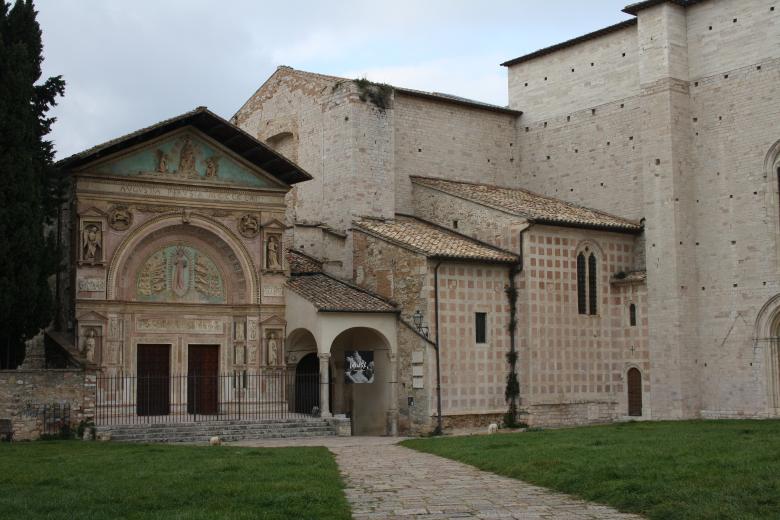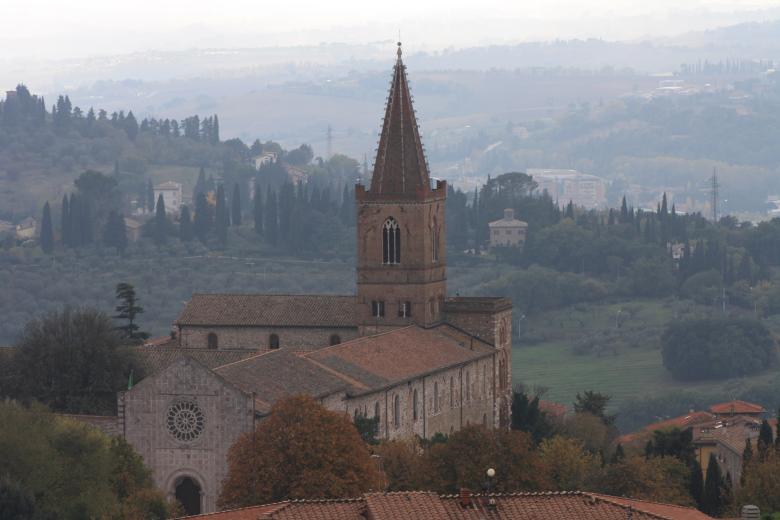In the tympanum you can see Jesus blessing among angels and seraphim, above the inscription AVGVSTA PERVSIA MCCCCLXI. The upper tabernacles have the statues of the Archangel Gabriel and Mary, while the lower shows the patrons of Perugia, St. Herculaneum and St. Constantius. The lunette shows the Ascension of Saint Bernardino in a mandorla, among angels, musicians and cherubs. On the lintel of the portal and under the two upper niches are five stories from the life of the saint. In the jambs of the portal are six Franciscan virtues and six groups of angel musicians.
The interior
On the right wall is the Standard of San Francesco al prato byBenedetto Bonfigli.
The high altar is built with a Christian sarcophagus (mid-4th century), in which the blessed Egidio was buried from the end of the 13th century to 1887. It is of the column type with Christ enthroned in the centre, between the personification of the Ecclesia and the Apostles; the lid is decorated with scenes from the Old Testament, with the Ark of Noah and Jonah.
On the left is the tombstone of Fra' Angelo, responsible for building the oratory; not far away is a copy of Raphael's Deposition by Orazio Alfani.
Behind the altar, two doors lead to the oratory of Saints Andrew and Bernardino, with its splendid carved and decorated coffered ceiling (1558). Seats, stuccoes and paintings date back to the 18th and 19th centuries, with works by Gaetano Lapis, Marcello Leopardi and Vincenzo Ferreri.
In the sacristy of the oratory is the Baldeschi Chapel, which houses the tomb of the jurisconsult Bartolo di Sassoferrato, who died in 1357.
Source: AA.VV., Umbria ("Guida rossa"), Touring Club editore




















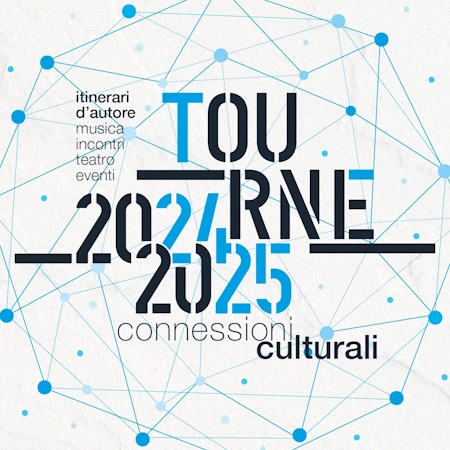
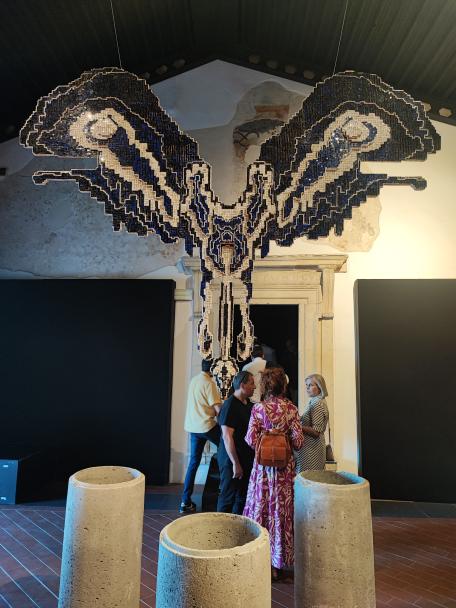




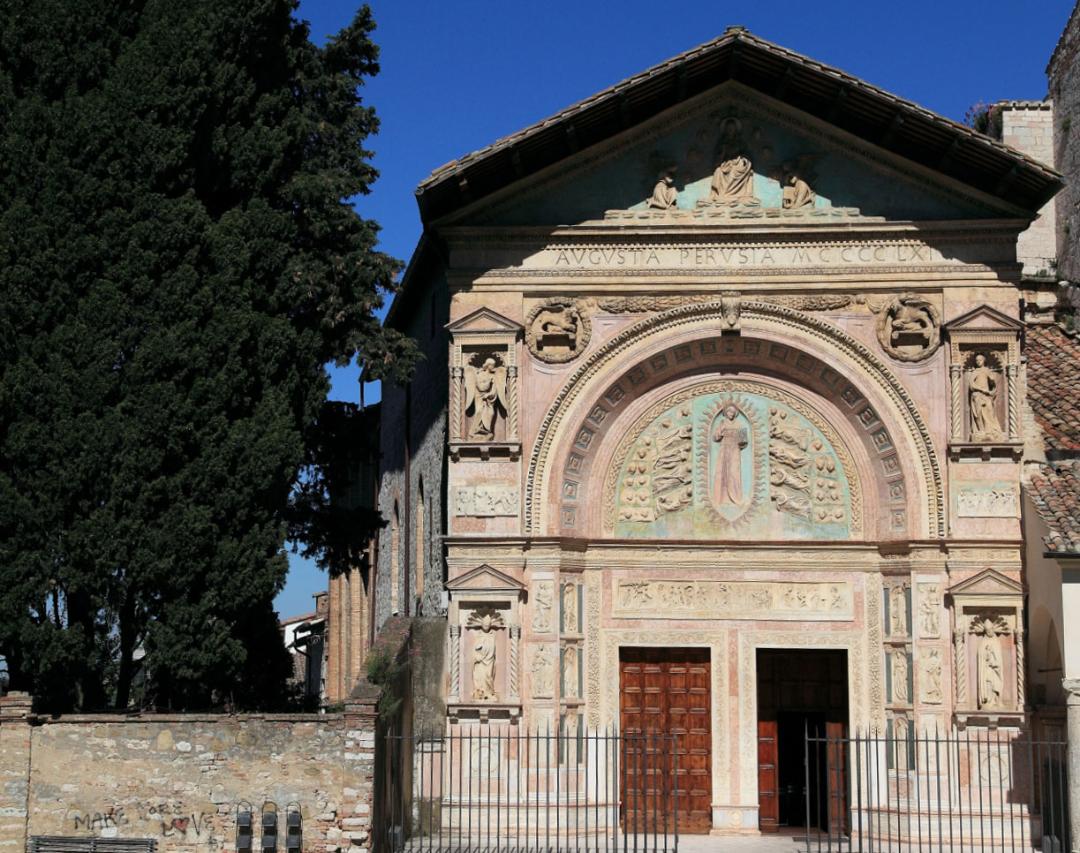


.jpeg/0d7d918e-eddd-ed4c-9da2-23a6917261f0?width=780)



